
Intermediate
Level 5 – Level 6
Intermediate Levels
Comprises of less used techniques than at the foundational levels. Nevertheless, these techniques are still essential to your fistic education as many of them (though not all) are critical application tools in the inside range. Also, more defensive aspects – such as head movement, parrying and jamming are introduced.
Level 4
Outside Hooks
-
This punch is for close range – keep the elbow sharply bent.
-
shoulder whirl and explosive shift of weight from one leg to the other.
-
Thrown to the chin or body.
-
Keep guard hand up with forearm pressed against your ribs or hook while holding the opponent with the other hand (holding and hitting is a tremendously simple and effective tactic… Safe for you, bad for him).
-
Holding with the non-punching hand is the preferred way to hook and/or shovel on the inside because not only does it make it hard for your foe to block the hook but it also makes it harder for him to counter punch too… A HUGE bonus.
-
Palm facing towards floor, but can also throw with palm facing you – experiment and see which you prefer.
-
Shoulder of punching arm should be kept as loose as possible; never push the hook over – whip it.
-
Never reach for the hook, make sure your feet are set and your balance is good.
-
Using the hook in combinations or with fakes is another good way to keep from getting countered.
“The lead hook should be used judiciously… It is most effective when going in or coming out and is useful against an over-reaching straight or against swings.”
Tao of Jeet Kune Do
“Your striking knuckles are pointing in the exact direction of your whirling weight.”
Jack Dempsey
“However, the outside hook is pure only so long as you keep it tight – only so long as the elbow is sharply bent – only so long as it’s delivered at short range… REMEMBER THIS: the more you ‘open’ an outside hook, the more it degenerates into a swing… You must keep it tight.”
Jack Dempsey
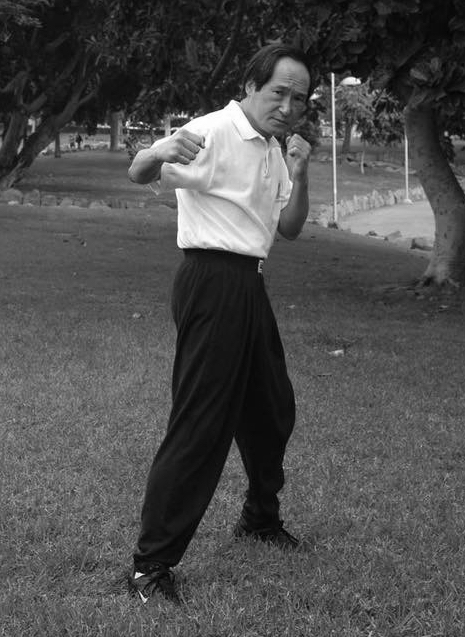
Finger Whip & Backfist
-
Not as powerful or as safe for your hand as the jab is, but can cause trouble – especially when it lands clean.
-
Only punch to land with the back of the knuckles.
-
Primary target is the opponent’s temple.
-
Keep the path of the backfist as straight as possible even though it’s coming in from the angle. Don’t draw it back or “chamber” it.
-
Can be used as a Hammer-Fist (with the side of fist).
-
The more prevalent variation of the Backfist is the Finger Whip to the eye, which strikes with the back of the fingers across the eye.
-
The Finger Whip gives the reach of the Finger Jab, but requires less accuracy. And, though not attacking the eye directly, it can cause swelling and disrupt the vision all the same.
Sweep & Inverted Kicks
-
The Sweep Kick can only target the head. It hits with the bottom of the foot, raking across the face
-
It is a relatively weak blow but with shoes on can cause damage.
-
The elbow turns out on the cross and stays down on the straight punch.
-
The Inverted Kick snaps underneath from the side and strikes with the side of the foot.
-
Though used sparingly these kicks can be used effectively against a good defensive fighter since they run in on such an odd angle.
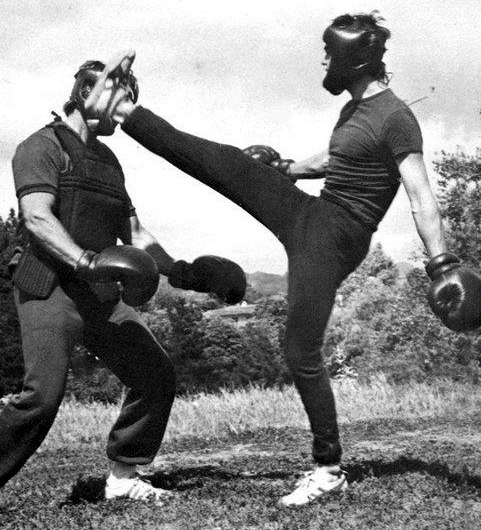
Knee Strikes
-
Vicious inside tools.
-
Generally the rear knee is used but this isn’t a steadfast rule.
-
Used expertly when you have control of your foe on the inside.
-
Especially devastating when you’re able to pull your enemy into the strike – perhaps the most powerful weapon in all of fighting.
-
You can target any part of your foe (head, body, groin, leg) that’s open.
-
Make it fast and learn to use your hips without losing balance or rate of fire.
“Five Way” Elbows
-
Thrown with snap.
-
A very dangerous inside tool that can be used as a heavy, knockout type blow or a cutting tool.
-
Never cross centerline with elbow.
-
JKD prefers to punch rather than elbow on the inside because punching is far more economical and, therefore, faster than using the elbow. In the event that the elbow line is open and the elbow strike is more direct than the punch, then surely throw it
-
This drill also works the back elbow strike in the event you are grabbed from behind (also taught in the Sil Lim Tao form).
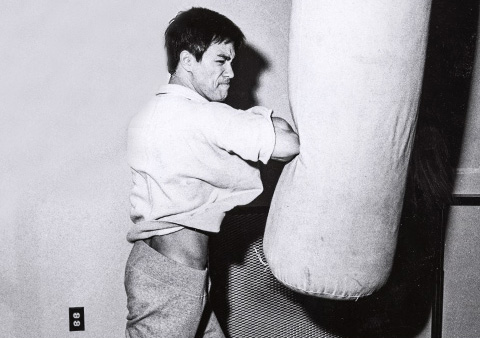
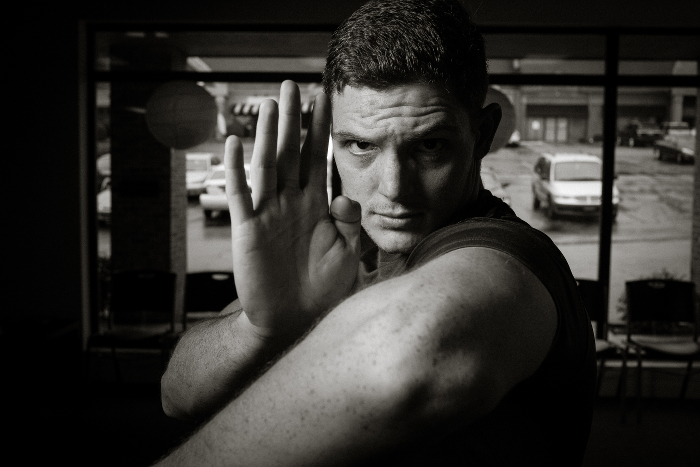
Snap Back
-
Drop the rear heel while keeping your guard high to allow a fast blow to miss.
-
“Snap-back” with return fire.
-
Be ready to move, to readjust distance if you can’t counter-attack immediately because the snap back, though effective against quick leads, can embolden the opponent to charge with overhands and hooks.
-
Careful of his faking a lead, drawing your snap back, and tackling you instead.
-
As with all head movement, speed and timing are essential.
-
Don’t leave your head back… Speed back to the on-guard stance.
Bob-and-Weave
-
The purposes of the bob are to:
-
Sink under a swing or hook in a controlled, balanced way.
-
To bring your fists closer to your opponent.
-
To maintain nearly normal punching position with the legs and feet.
-
-
A bob can be done straight to either side.
-
Bow at the waist a little without using the legs.
-
Countering off the bob is usually done during the weave or in a delay with straight punches or shovels.
-
Weaving creates new angles, keeps you a moving target, and makes you less predictable.
-
Nearly all outside-hookers are bob-and-weavers.
-
Think of Mike Tyson and Joe Frazier.
-
Used with good footwork to get inside, the Bob-and-Weave is the preferred defensive tactic for body punchers and hook/uppercut specialists.
-
Keep your hands up against the chin, elbows against the ribs when in in-fighting (shell) or use one hand to hold (immobilize) while the other is free to attack.
“Bobbing might be called glorified ducking, for a ‘bob’ is an artistic duck.”
Jack Dempsey
Essential Drills
-
Combination
-
Cross, Snap Back, Cross, Hook, Cross, Bob & Weave.
-
Sil Lim Tao – Section 5
-
Pak Sao opening with Noy Jut and Wang Jeung.
Level 5
Push-Shuffle Lead
-
Derived from Jack Dempsey’s “falling-step”.
-
HAND BEFORE FIST (Derived from fencer Aldo Nadi)! ALWAYS!
-
Don’t draw back or telegraph in any way. Shoot forward off the raised rear heel just as the lead hand begins to move and explode forward!
-
Keep the punching arm completely relaxed right up until impact and then smash it forward as you slightly twist your hip upward toward the target.
-
That terrific torque and drive right at the end of the blow gives the falling-step “jolt,” and amazing explosive power.
-
It is the most powerful punch you can throw.
-
Remember the three-point landing: fist, front foot, rear foot.
-
Step one: hand before foot; Step two: the push-off; Step three: hip rotation and shoulder extension (offsets the gravitational pull): Step four: impact; Step five: landing of the front foot (the heel for stable landing); Step six: contact and retracting the hand.
“After initiating the push-off, the left (rear) leg gets a well deserved rest and merely goes along for the ride.”
Jim Driscoll
“Keep your eyes open; but keep your ears closed to the kibitzers and wise guys who may scoff at your early awkwardness in using the trigger step. They may tell you that you’re charging like a war horse. They may tell you that you’re merely poking as you would with a stick. They may tell you that every straight punch to the head must land with the fist in a palm down position.”
“They may tell you that you are completely off balance and that you must have a slow recovery if you miss with a stepping punch.”
“You are not charging; you are being shot forward. You are not poking; you are exploding. A stepping straight punch to the head should land with the fist in an upright position to keep the punch straight. The instant you turn your fist to land palm-down in a head punch, you will begin to loop the punch. As your feet, legs, and arms accustom themselves to the falling, power-line explosions, they will take care of your balance and recovery. They’ll make certain that you still are in normal punching stance, whether you land on your target or whether you miss.”
Jack Dempsey’s ‘Championship Fighting’
Stealing-a-Step Kick (High/Low Fake)
-
The hand acts as a fake, to disguise the motion of the rear foot shooting forward to facilitate the kick.
-
Especially useful at long range to bridge the gap/secure your attack (so that you aren’t countered).
-
A virtual nightmare to defend against once you are accomplished at it.
-
The deceptive false attack certainly must be real enough to draw the enemy’s attention upstairs. At this point he will find it extraordinarily difficult to defend his low line.
-
The kick may be a side, straight, or snap kick. Every opponent is a little different but there will be something open low.
-
A variation of this can be used by using a push before the kick in order to drive the foe off balance. This is especially effective against boxers that fight out of a crouch and slip punches. Push them when they bob or duck and look to take advantage of their loss of balance with a punishing low line kick afterwards.
-
Another variation is the false lead to the head followed by the cross to the body – either way, the principle is simple: fake one line and attack another.
“One can say that JKD is built on feints and the actions connected with them.”
Tao of Jeet Kune Do
Shin/Knee Kicks
-
Bruce Lee nicknamed it the “giant killer.”
-
The Side, Hook, Front, or Snap Kicks can all be used effectively against the opponent’s leading leg but mainly the side and straight kicks.
-
This isn’t a new kick so much as it is a moment to re-emphasize the importance of low kicking.
-
Keep the kick low along the floor and snap a little from the knee for power.
-
Is a constant menace to the opponent and can either stop him completely or frustrate him into making a huge mistake.
-
Train diligently to be able to throw it at any point without telegraphing your footwork.
“The leading shin kick is a potent weapon both in offense and defense…it is a giant killer…is the equivalent to a jab in Western boxing except it is longer and much harder to defend against…is the spearhead of your attack…with a pair of shoes on, the effect can be quite devastating.”
Commentaries on the Martial Way
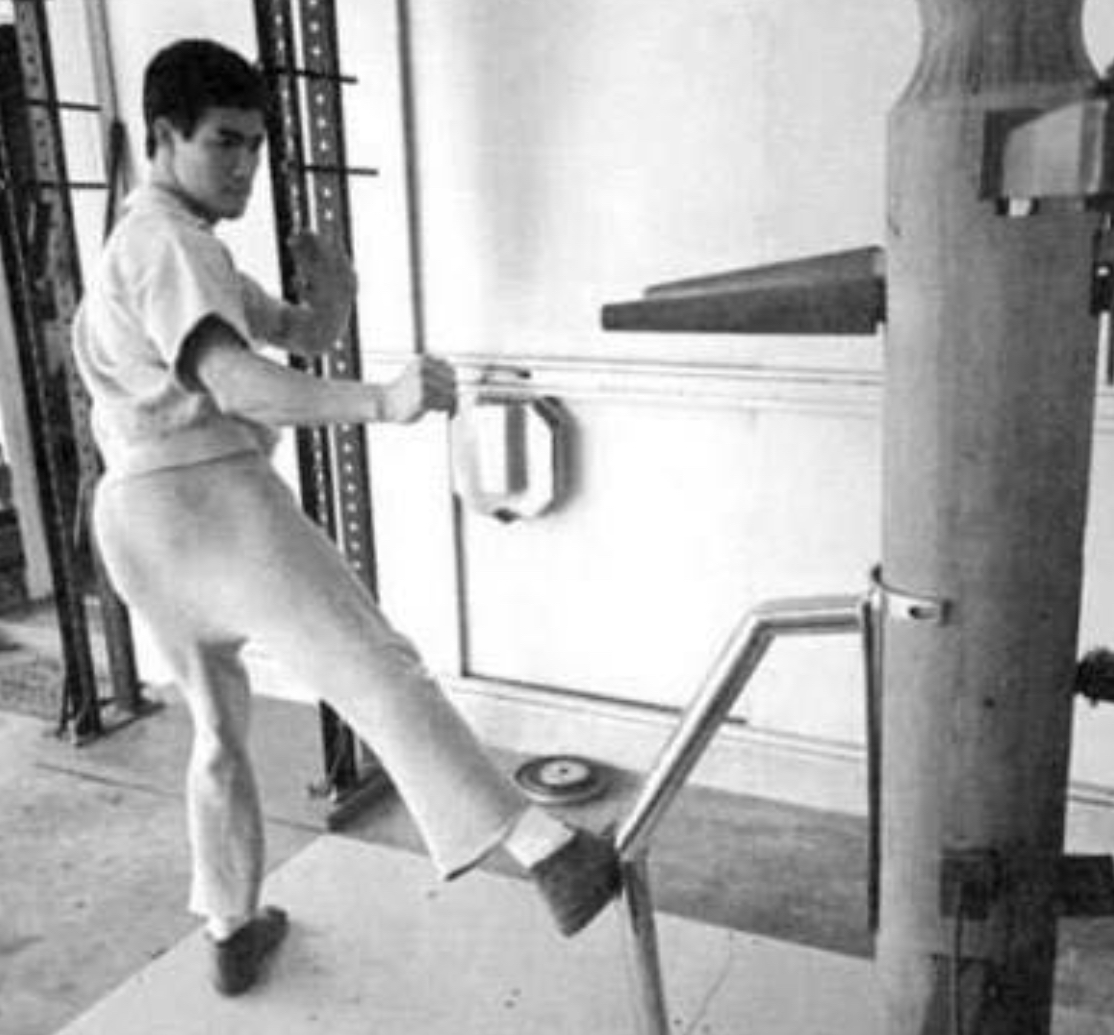
Low/High Fake
-
Fake a low kick and use the straight punch.
-
This simple, yet brutal tactic often deceives the enemy into lowering his guard AND bringing his head forward into the path of your incoming straight punch – for this reason it is a dynamite blow to land.
-
Grip the floor with your toes to launch the fake kick and use the momentum gained as the leg returns to the floor to power your punch. The rear foot adds extra wallop as you drive it home.
-
Though not as powerful, the lead to the body can be faked instead of the kick.
-
When mastering the use of both fakes – high & low – the JKD fighter is able to attack the length of the foe’s entire body with incredible speed.
-
Though usually thrown on a one/two rhythm, all strokes must be timed appropriately to the enemy’s movements.
-
The “perfect” fake is the one that secures your lead (you don’t get countered) and opens the target.
Sprawl
-
As much as we’d love to stay behind our ready position, there are moments when we may need to sprawl against a good takedown.
-
The Sprawl varies in depth depending upon whether or not the enemy has your leg(s).
Bag work
-
Quarter rounds/In-Out rounds.
-
Lead leg kick, 1-2, push shuffle out, circle to next “quarter”, repeat.
-
Teaches “weapon first” in action and “hollow out” principle.
-
Also teaches use of the fighting measure.
-
Use the high-arm guard and triangle covers when stepping out.
High Arm Guard
-
Both hands are extended in front of you, palms facing forward as this is a strong, pressing type position.
-
Used expertly to jam the line when the opponent gets off.
-
Generally always performed with footwork or else the enterprising enemy will find an opening.
-
The arms should be carried as high or as low as needed to fend off the attack depending upon the height and angle of the incoming fire.
-
JKD prefers parrying with the rear hand and countering with the lead side weaponry but sometimes this isn’t possible and the High Arm Guard (or Fence) works as a support structure to aid the footwork in retreat or angling.
Essential Drills
-
Pad Drill #3.
-
Slip, Uppercut, Slip Uppercut, Pivot, Hook, Elbow, Push, Kick
-
Sil Lim Tao – Section 6
-
Tan Sao opening.